Welcome to Mývatn
Your destination in North Iceland!
Your destination in North Iceland!
The Mývatn Area is famous for its beautiful and unworldly landscapes. These are the Waterfalls in our area that you have to visit! Tag #VisitMyvatn
Aldeyjarfoss - This is the second in a successive row of beautiful falls in Skjalfandafljót river and has a 20 meter cascade. Here you‘ll see a fascinating contrast between the white water of the fall and dark basalt columns, perfect scenery for photographers.
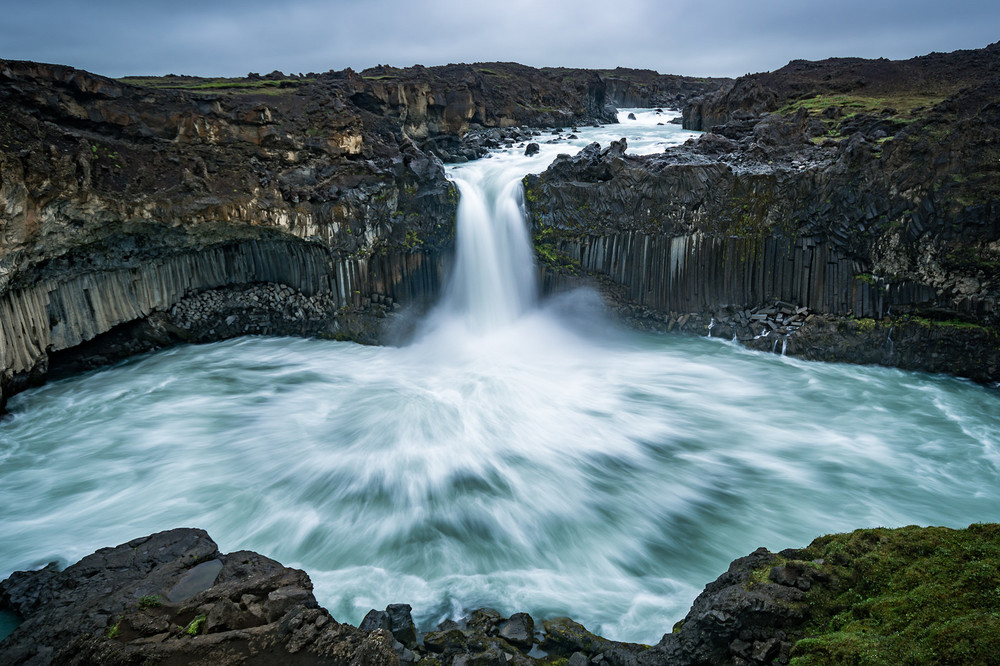
Aldeyjarfoss is a beautiful waterfall in a strange environment of basalt columns and potholes. It is on the west side of the valley, about 1 km south of Mýri, at the start of Sprengisandur Route. A little above it is Ingvararfoss Falls and still farther upriver Hrafnabjargafossar Falls.
Goðafoss - This waterfall, 12 meters high and 30 meters wide, is at once the most famous of the Skjálfandafljót waterfalls and one of the most famous in North Iceland and the country at large. According to the sagas, lawspeaker Thorgeir Ljosvetningagodi settled a religious crisis in Iceland by throwing the idols of the old Nordic gods into the fall, wherefrom it gets its name “The waterfall of the gods“. Certainly, those who witness the sheer beauty of the fall will agree that the name is fitting. Godafoss Falls is regarded as one of the most beautiful waterfalls in Iceland, and it is right next to Highway 1 at Fosshóll. Cliffs at the edge of the falls divide it into two main waterfalls, and several smaller ones.
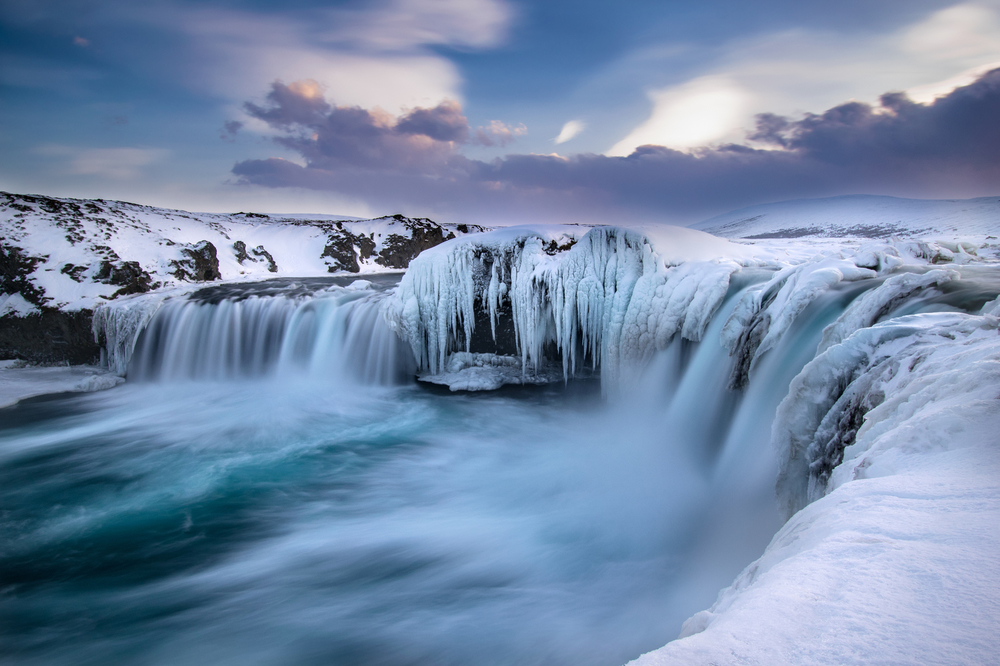
Dettifoss - Perhaps a waterfall so wild and fierce was befitting of an area that just screamed natural and raw as it flowed on the glacial river Jökulsá á Fjöllum meandering through Iceland's version of the Grand Canyon - Jökulsárgljúfur. This waterfall has a flow of about 500 cubic meters per second at high flow, with dimensions of 44m tall and 100m wide and is considered one of the most powerful waterfalls in all Europe.
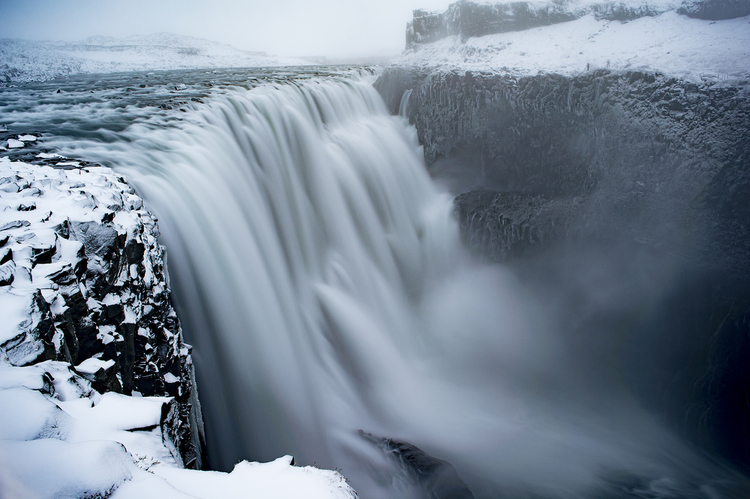
Selfoss waterfall is located in Jökulsárgljúfur canyon in the Northern Region in Iceland only one kilometer south of the mighty waterfall Dettifoss. Both waterfalls are part of the natural wonders in Jökulsárgljúfur as well as the river Jökulsá á Fjöllum. The glacial river in the mountains. Although Selfoss has always stood in the shadow of Dettifoss it is a great construction of nature and equally as enjoying to visit. The height is only 10 meters, but the width is more than Dettifoss. And of course the visit is only half an hour hike from Dettifoss, and both waterfalls share the same parking lots, both on the east side and the west side. If you are visiting Dettifoss, be sure not to miss this beautiful waterfall.
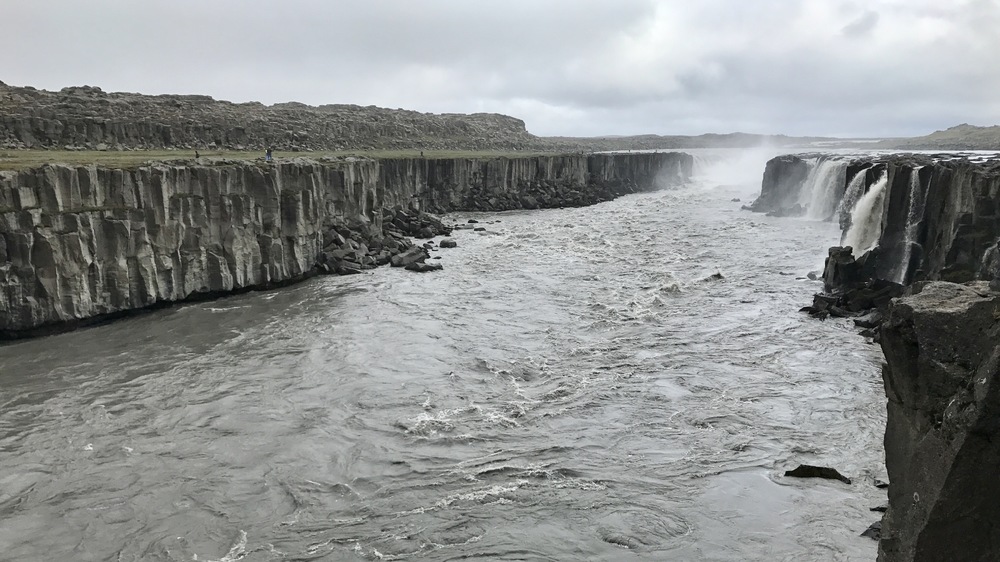
The places you must check out during your stay!
There are so many things to see and do in Mývatn. Here are the top locations we recommend you visit while you are in the area. Tag #VisitMyvatn
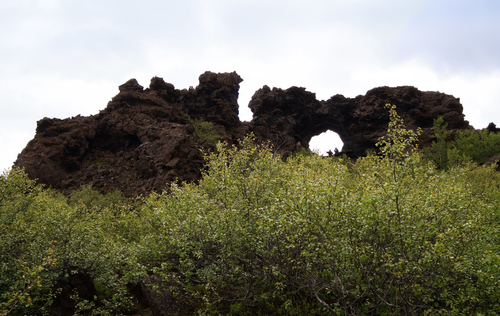 Dimmuborgir
Dimmuborgir
The Dark Fortress at Mývatn is a true wonder of nature and nowhere else to be seen in the world, i.e on dry land. Dimmuborgir consist of huge lava rock formations which make you feel like you stepped into another world - a world of fairy-tales. The formation of these extraordinary lava cliffs and pillars is caused by lava ponds, i.e. the hot lava streamed over these ponds trapping the water underneath the lava. Steam issued through vent in the lava pools and formed these pillars, which then remained standing even after the crust around them had gone away.
The rocks are brittle and fragile because of how they came to be made, so there is no climbing in them.
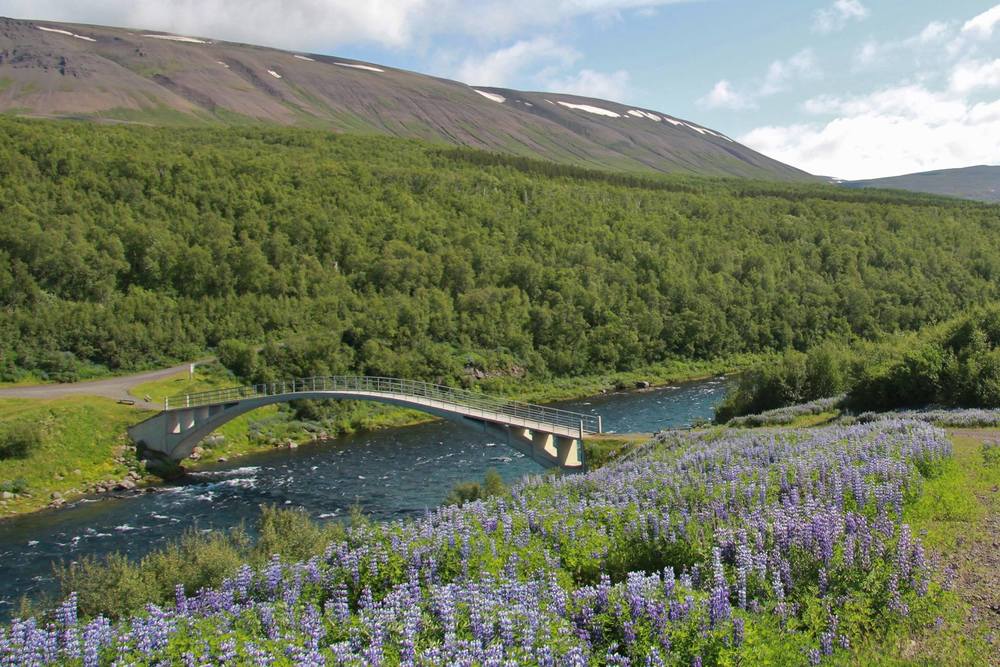
Vaglaskógur
Vaglaskógur forest is the country's largest birch forest and a popular destination for Icelanders. It is one of the most beautiful forests in Iceland. Due to strategic conservation for over a century, the birch trees in Vaglaskógur forest have distinctive characteristics. At the northern perimeter of the forest, you will find a stone arched bridge. Built in 1908, it was the first of its kind in Iceland. Quite ambitiously, it was the longest stone arch bridge in Scandinavia at the time, 55 meters long. It is still used as a footbridge and a must to walk over it if you are in the area!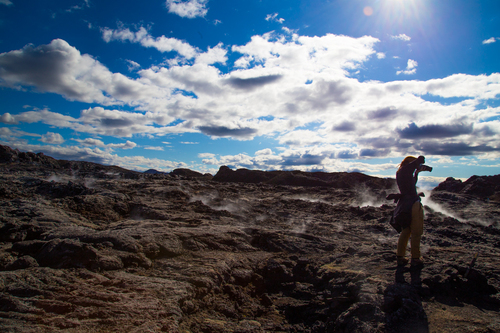 Krafla Caldera
Krafla Caldera
The Krafla Caldera is a 10km long, 2km deep, cauldron-like geological feature perched on the edge of the Eurasian and American tectonic plates. A collapsed, but still active volcanic area, in total there’s been 29 recorded eruptions, the most recent of which was the Krafla Fires in the 1970s.For tourists, there are three main highlights to the Krafla area. Leirbotn (the geothermal power station), Víti Maar (a volcanic crater with an opaque, teal green lake) and Leirhnjúkur (steaming sulphuric terrain and multicoloured lava field landscapes).
Leirhnjúkur Lava Fields - "With steaming sulphuric terrain and craggy, lava field landscapes, this is truly one of the must-see gems of the Mývatn area, according to Visit Húsavík". This is a nice place to walk around to experience this still warm beautiful lava. The area that inhabits the magma is very colorful, full of moss and lichen painted with sulphur and rhyolite. This is an active volcanic area with beautiful formations and an extraordinary view. We recommend to everyone to take the time and visit Leirhnjúkur Lava Fields.
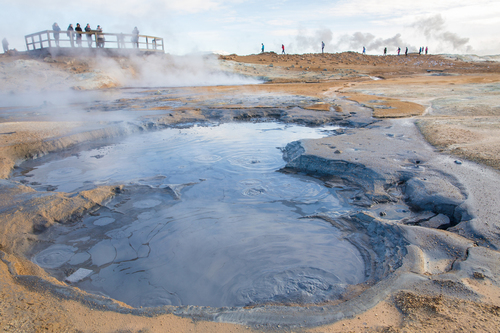
Hverir
Hidden from the view, if you’re driving east from Mývatn, behind Námaskarð is a large geothermal field of Hverir that is a unique wasteland where boiling mud, hot springs and hissing chimneys give life to a desolate Mars-like scenery. It is a high-temperature geothermal area with fumaroles and mud pots that bubble to a temperature of over 200 degrees Celsius. According to many, the Hverir Geothermal Field is one of the most spectacular (and overlooked) places in all of Iceland.

Goðafoss
Goðafoss waterfall is one of the most spectacular waterfalls in Iceland. The water of the river Skjálfandafljót falls from a height of 12 meters over a width of 30 meters. In the year 1000, the Lawspeaker Þorgeir Ljósvetningagoði made Christianity the official religion of Iceland. After his conversion, Þorgeir threw his statues of the Norse gods into the waterfall hence the name Goða-foss; the waterfall of the gods.
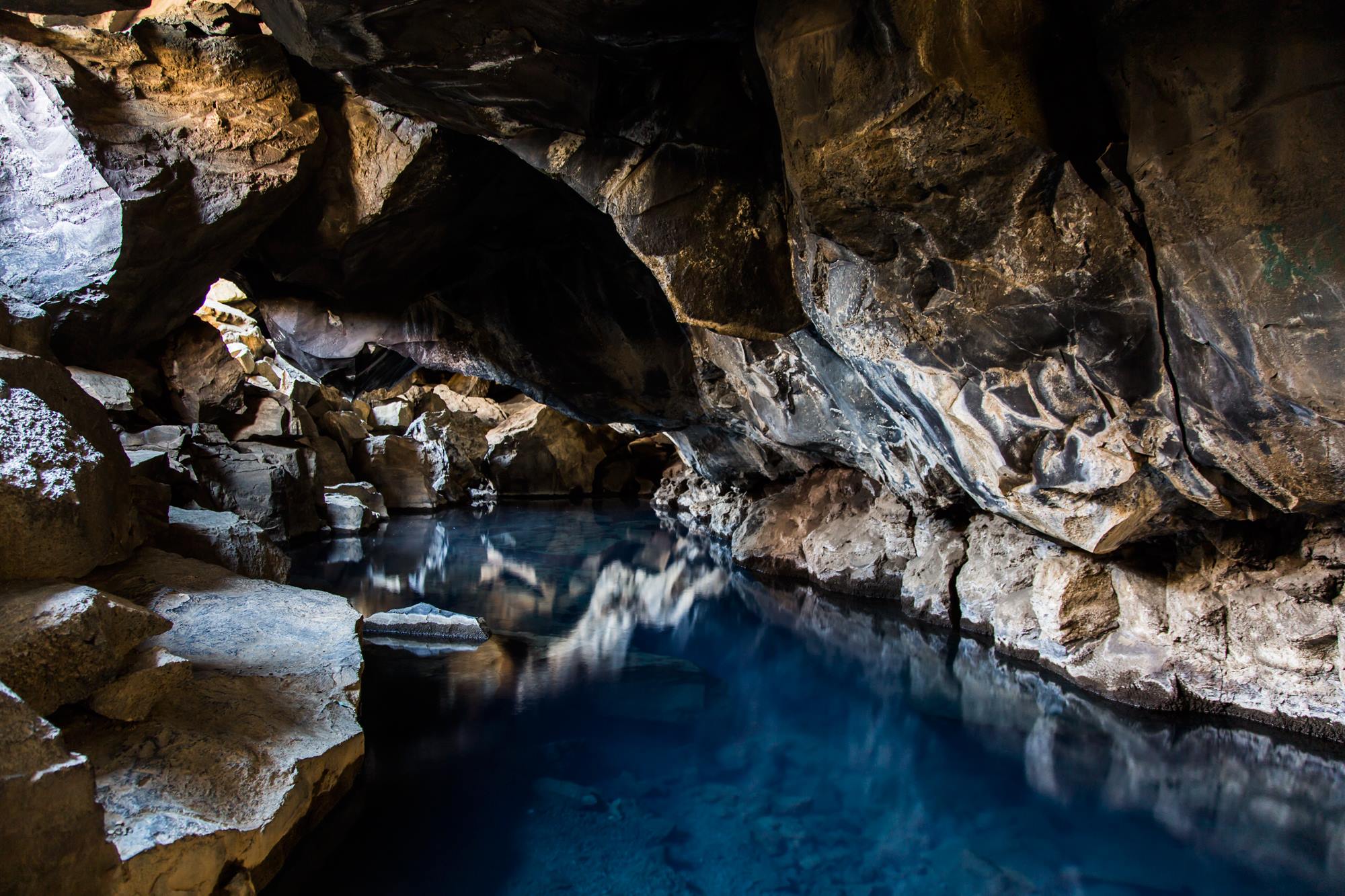
Grjótagjá
Grjótagjá is a small cave in the Mývatn area, and was a popular bathing place for the locals some decades ago. However, geological activity in the period 1975-1984, caused the temperature of the water in the cave's pool to rise to such a degree that it has not been possible to bathe there since. But one can always dream ... a peep into the waters and a fertile imagination could conjure up visions of taking a dip in this cosy little cave, as was the custom in the past.
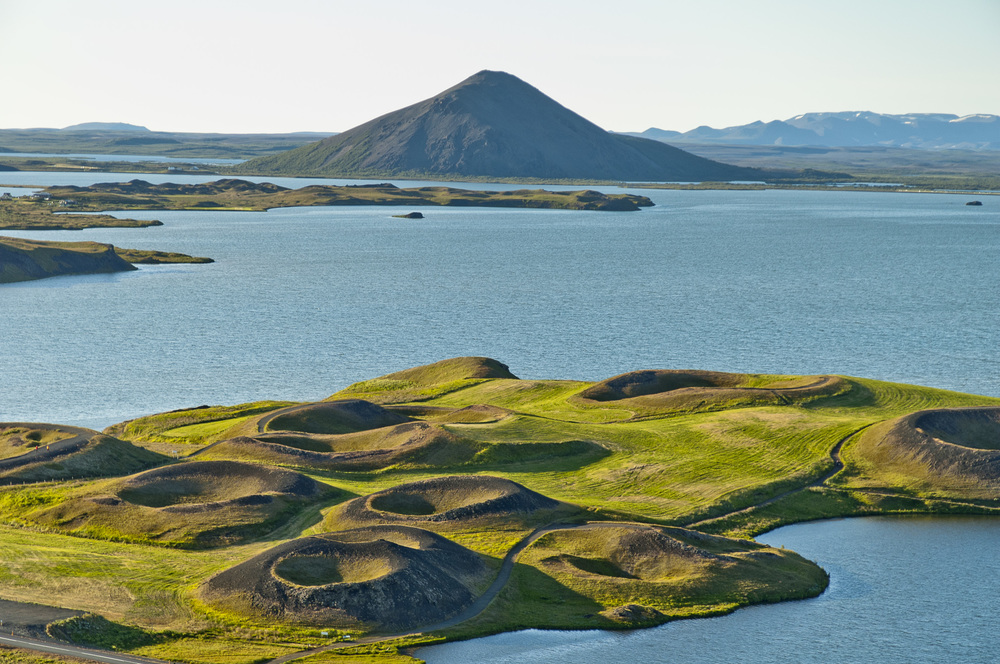
Skútustaðir Pseudocraters
Skútustaðagígar pseudo craters were formed by gas explosions when boiling lava flowed over the wetlands. The craters are a popular site for birdwatchers and are protected as a natural wetlands conservation area.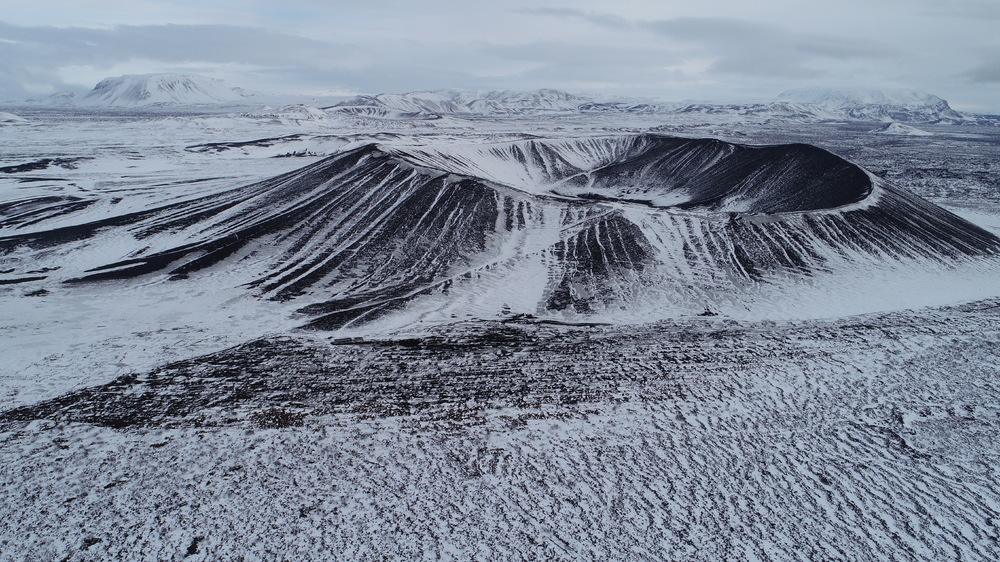
Hverfjall
Hverfjall has a large, circular explosion crater, about 140 metres deep and with a diameter of 1,000 metres. Hverfjall is one of Iceland's most beautiful and symmetrical explosion craters, besides being one of the largest of its kind in the world. It is considered certain that the crater was created during a volcanic explosion, and its age is estimated to be around 2800 - 2900 years.
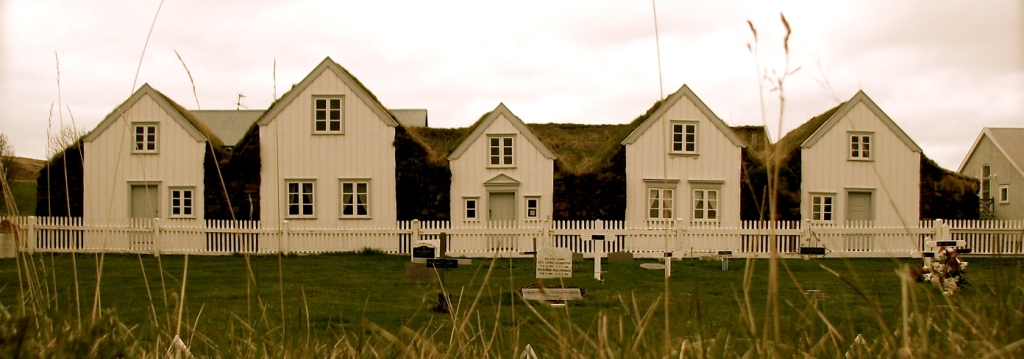
Grenjaðarstaður
It is the site of a church and also one of the most famous turf farms in Iceland. It was home to the chieftains of the past, and it is an enlightening experience to visit the farm and become acquainted with the lives of Iceland's rich and famous in days gone by.
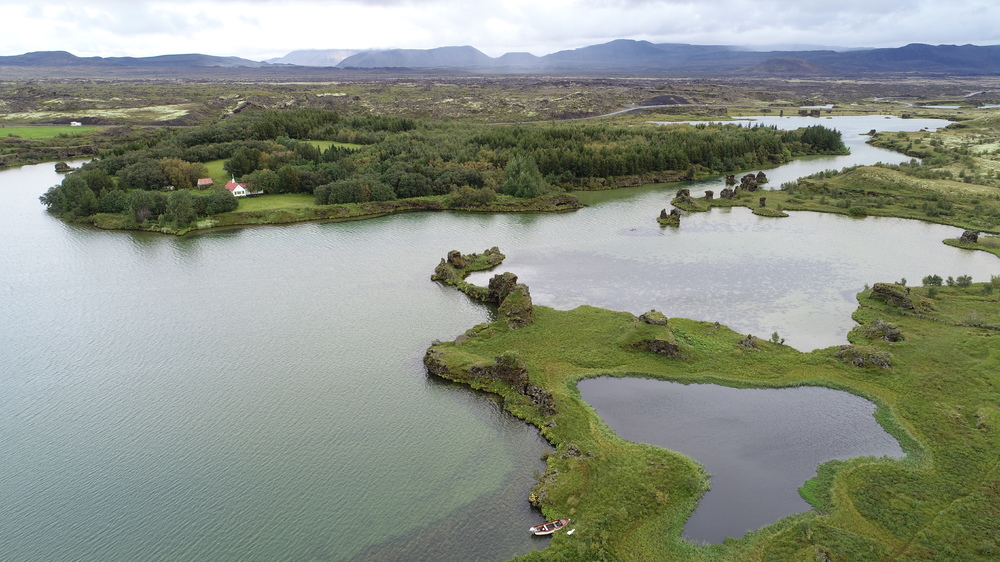
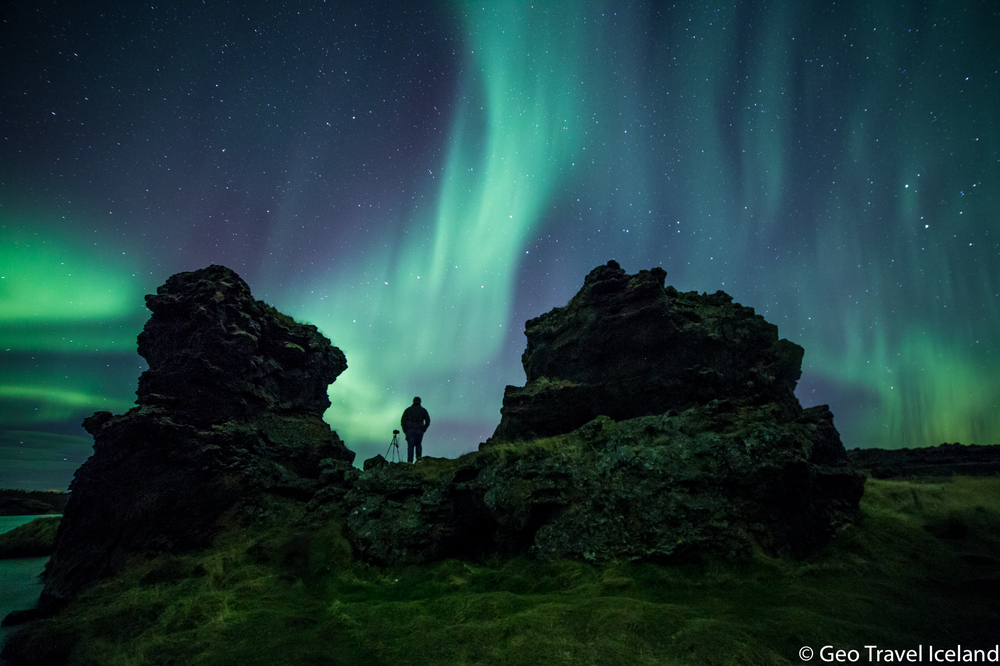
Höfði
Höfði is a rocky promontory which reaches into the waters of Lake Mývatn. The view from here is good, giving a vista of the lake's coves and inlets, besides being an excellent site for bird watching. Kálfastrandarvogur bay laps the shores of Höfði and is famous for its unusual lava formations both off and onshore, and these rocky outcrops, named Klasar and Kálfastrandarstrípar, have done much to earn Kálfastrandarvogur and Höfði their reputation for being among the most beautiful areas around Mývatn.
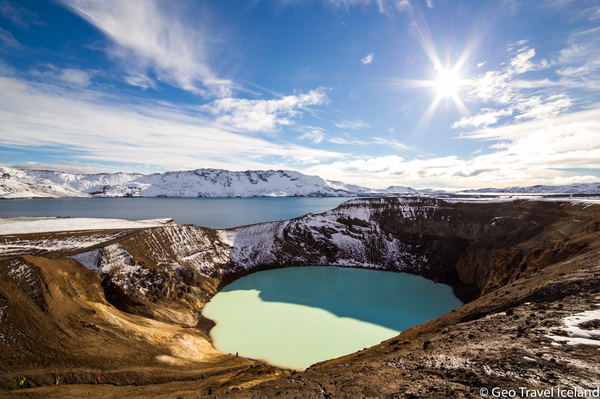
Askja
Askja is an enormous caldera and central volcano in the Dyngjufjöll mountains, north of Vatnajökull glacier. The caldera is a bedrock subsidence located above a massive magma chamber, and is still 'in the making'. Askja was not explored until the nineteenth century, but a series of eruptions in 1874-1875, especially a very powerful explosive eruption in March 1875, caught the attention of the local people as well as scientists. In the massive eruption in 1875, the volcano erupted approximately 2 billion cubic meters of ash and pumice, and a new caldera was formed inside the older one. In the following decades the new caldera was filled with water, and now contains the 11km² Lake Öskjuvatn, which is also one of the deepest lakes in Iceland (220m). The Askja volcano erupted a few times in the 1920s, but the latest eruption was in the autumn of 1961.

Aldeyjarfoss
Aldeyjarfoss waterfall is considered the most beautiful one in the river Skjalfandafljot. The waterfall is framed with long, natural basaltic columns. It is located in the uppermost regions of the Bárðardalur valley, on the Sprengisandur highland route. It is possible to drive almost all the way up to it. The photographers dream location!
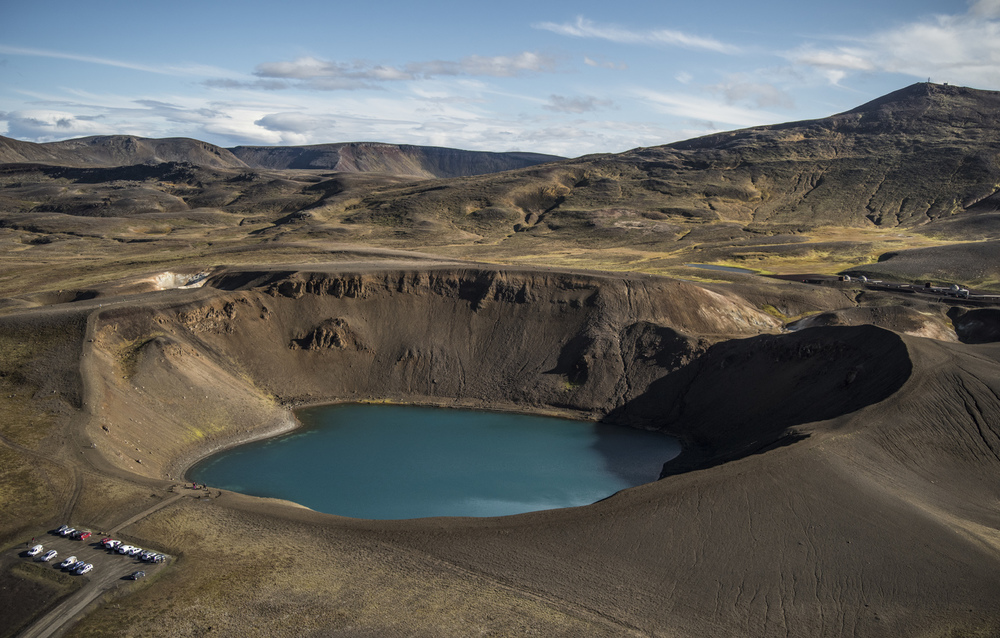
Stóra Víti
This is a maar (explosion crater) about 300 metres in diameter by Krafla mountain, which was formed during a massive volcanic eruption at the start of the famous Mývatn Fires in 1724. The eruption continued more or less non-stop for 5 years and Víti's bubbling cauldron of mud boiled for more than a century after that.
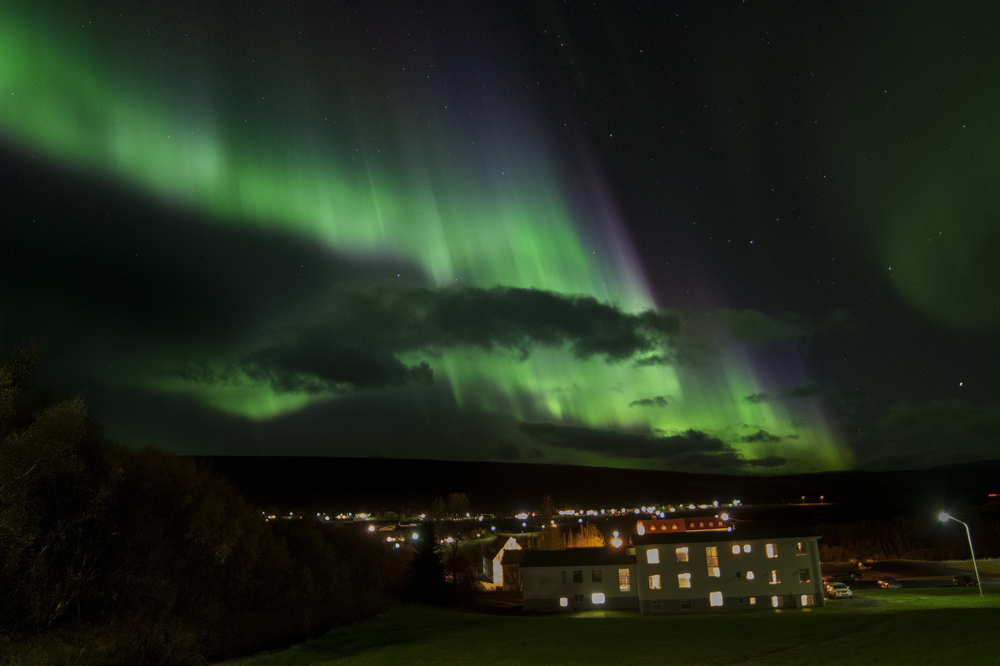
The greater Mývatn area has some of the most beautiful sights in Iceland and the location is perfect to scout the north from. Have a look at some of the valleys in our area, so close to each other yet so different!
is the home to Vaglaskógur forest, the country's largest birch forest and a popular destination for Icelanders. It is one of the most beautiful forests in Iceland. Due to strategic conservation for over a century, the birch trees in Vaglaskógur forest have distinctive characteristics. The trunk is light in color, and the trees grow straighter and taller than most other birch species in Iceland.
It's a good place for picking berries and mushrooms and the forest has many great walking trails. Birds that can be found at Vaglaskógur include redwings, wrens, common snipes, ptarmigans, common redpolls and goldcrests. There are excellent campsites in the area and there is a swimming pool and sauna at Illugastaðir (11 km away), along with a children‘s playground and a minigolf course.
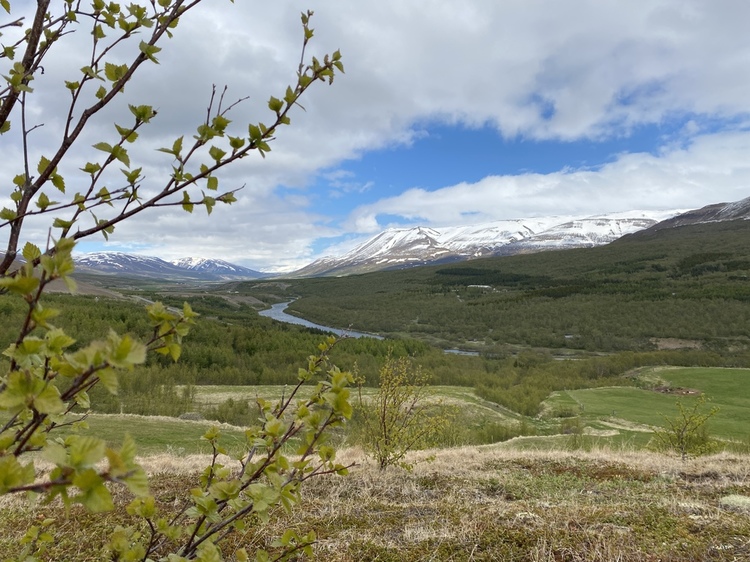 Fjóskadalur valley is green and fertile with the Fjónská river running through. It is a narrow valley, thus sheltered from most wind directions. The Fnjóská river is reputed to be one of the most beautiful fishing rivers in Iceland. At the northern perimeter of the river (in Vaglaskógur forest), you will find a stone arched bridge. Built in 1908, it was the first of its kind in Iceland. Quite ambitiously, it was the longest stone arch bridge in Scandinavia at the time, 55 meters long. It is still used as a footbridge and a must to walk over it if you are in the area!
Fjóskadalur valley is green and fertile with the Fjónská river running through. It is a narrow valley, thus sheltered from most wind directions. The Fnjóská river is reputed to be one of the most beautiful fishing rivers in Iceland. At the northern perimeter of the river (in Vaglaskógur forest), you will find a stone arched bridge. Built in 1908, it was the first of its kind in Iceland. Quite ambitiously, it was the longest stone arch bridge in Scandinavia at the time, 55 meters long. It is still used as a footbridge and a must to walk over it if you are in the area!
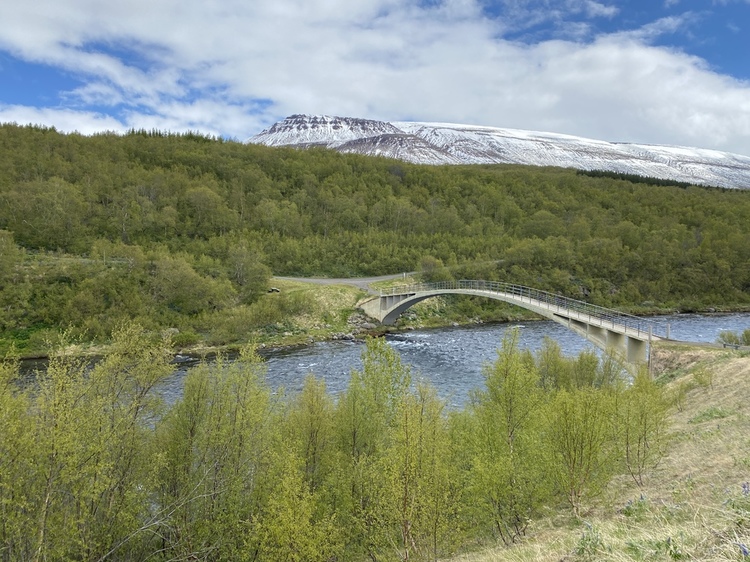 The best way to visit Fnjóskadalur is on a relaxed self drive tour. It is about 15 km from Akureyri and 60 km from lake Mývatn.
The best way to visit Fnjóskadalur is on a relaxed self drive tour. It is about 15 km from Akureyri and 60 km from lake Mývatn.
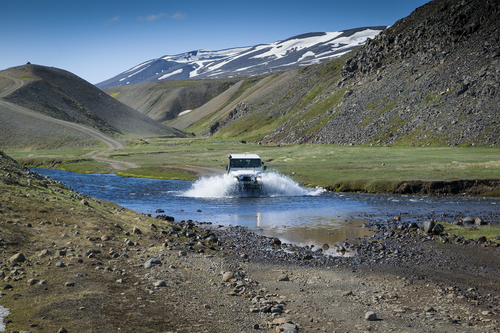
is truly the place to experience the beautiful pristine wilderness of Iceland. It is the hiker's paradise and a great berry land.
Flateyjardalur is a deserted valley on the Flateyjarskagi peninsula. It stretches north from Fnjóskadalur valley, all the way to Skjálfandi bay. Flateyjardalur is named after the island of Flatey, which lies just off the shore. It is so remote and out of the way that it’s hard imagining to live there. Still, it was inhabited until 1953. There are three concrete houses, built in the late 1920s, which today are only inhabited seasonally, during summer. The valley bottom is flat and fertile and extremely colourful and beautiful during summer.
Due to extreme winters and heavy snow, Flateyjardalur valley is only accessible for a short time during summer and only by 4WD. Phone reception in the valley is little and unstable.
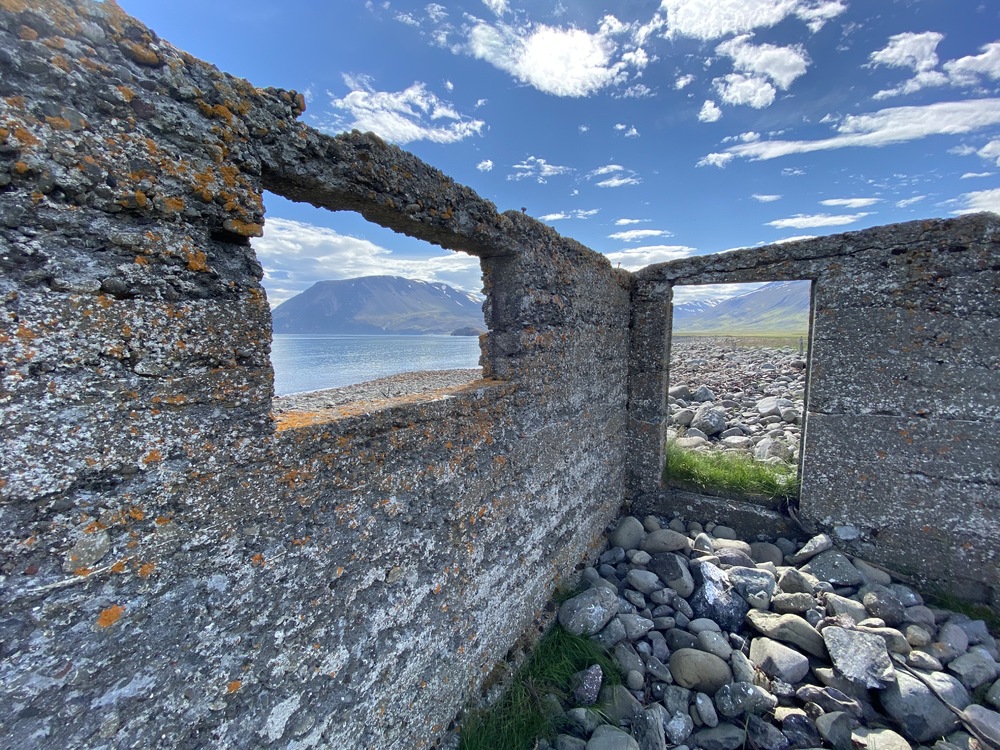
Want to have the perfect day scouting waterfalls? Then we recommend Bárðardalur valley - the home to some of the most magnificent waterfalls in Iceland. It is narrow and shallow and one of the longest inhabited valleys in the country, about 45 km long.
The glacier river Skjálfandafljót flows through Bárðardalur. It's the 4th longest river in Iceland, 180 km long and very powerful. Goðafoss waterfall is at the north end of the valley by road nr 1. At the south end of Bárðardalur valley we have Aldeyjarfoss waterfall and Hrafnabjargafoss waterfall. You won't believe the beauty!
There are roads on each side of Skjálfandafljót and in the inner part of the valley a bridge so you can take a round trip! But to get all the way up to Aldeyjarfoss and Hrafnabjargafoss waterfalls you need to stay on the vest side of the river. Bárðardalur is also a gateway to the highlands but be sure to have the right car for the trip and to check the road conditions before driving up to Sprengisandur. (Highland Driving - Safetravel)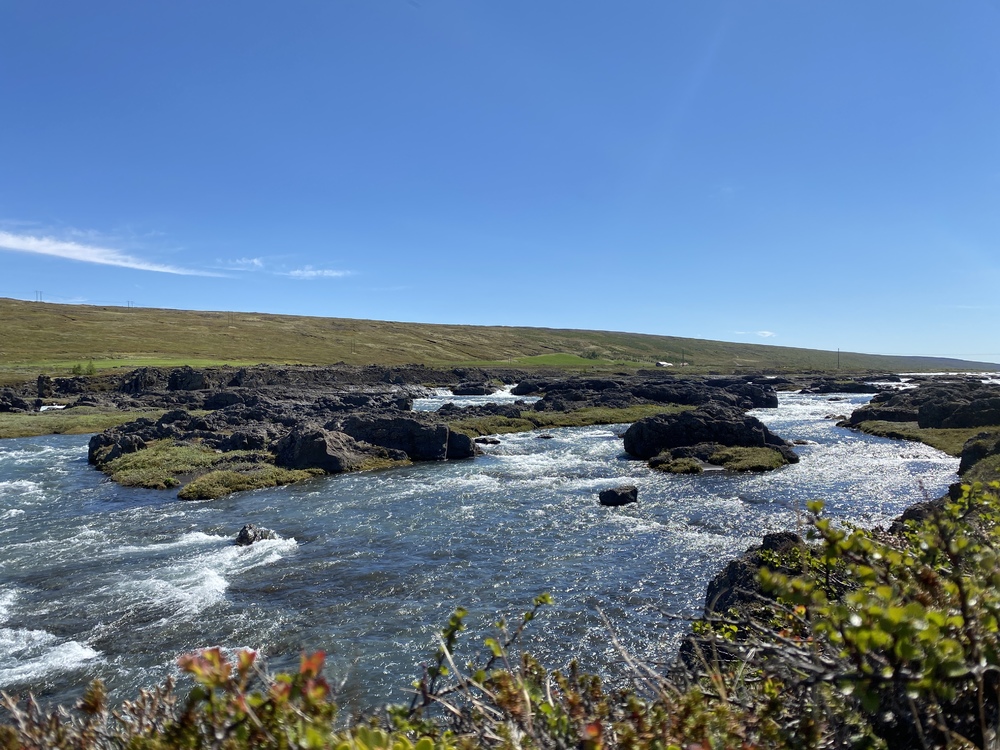 The best way to visit Bárðardalur is on a relaxed self drive tour. It starts at road nr 1, by Goðafoss, about 34 km from Akureyri and 45 km from lake Mývatn.
The best way to visit Bárðardalur is on a relaxed self drive tour. It starts at road nr 1, by Goðafoss, about 34 km from Akureyri and 45 km from lake Mývatn.
is a broad lowland area at the head of Skjálfandaflói gulf. It lies largely on the Aðaldalshraun lava field, which comes from the Lake Mývatn area. Widespread birch bushes and strangely beautiful lava formations are characteristic of the valley. Farms are along the edge of the lava and belts of sand along the coast.
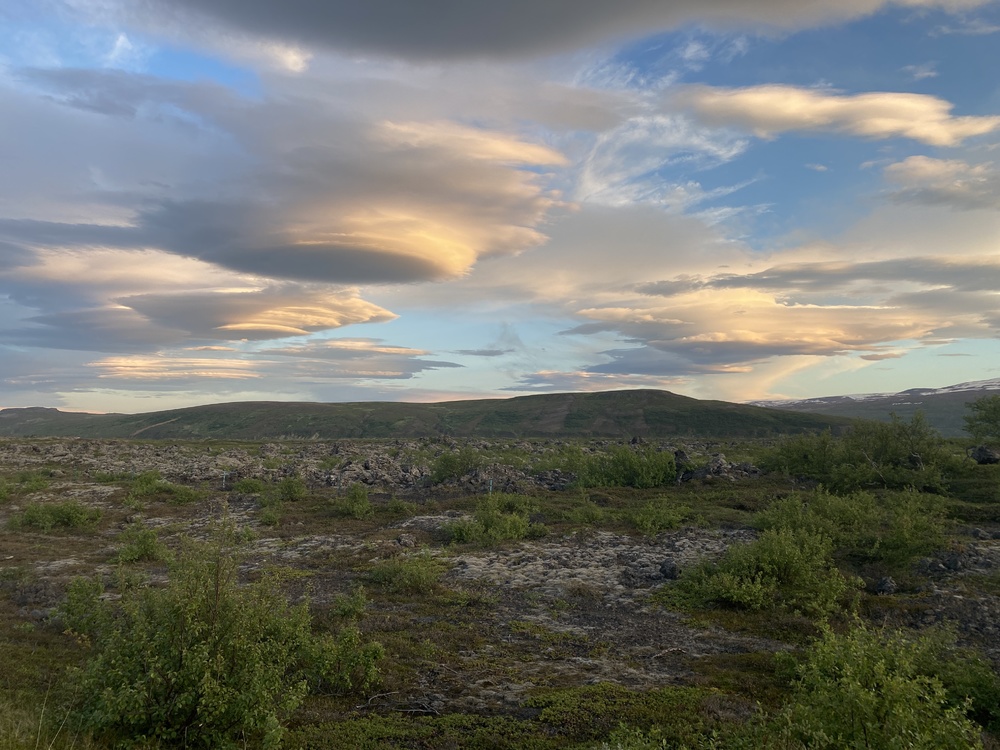 We recommend a visit to Grenjaðarstaður. It is the site of a church and also one of the most famous turf farms in Iceland. It was home to the chieftains of the past, and it is an enlightening experience to visit the farm and become acquainted with the lives of Iceland's rich and famous in days gone by.
We recommend a visit to Grenjaðarstaður. It is the site of a church and also one of the most famous turf farms in Iceland. It was home to the chieftains of the past, and it is an enlightening experience to visit the farm and become acquainted with the lives of Iceland's rich and famous in days gone by.

Laxá River is one of the best known and most popular fishing rivers in Iceland.
Considered the fairest of rivers with its many grassy or wooded islands, deep pools and swift currents. It comes from Lake Mývatn and runs through Laxárdalur valley and Aðaldalur valley.
Laxárvirkjun is a hydro–electric station at the foot of Laxárgljúfur gorge. It was first built in 1939 but extended twice since. The gorge is deep and in places wild, with the waterfalls Brúarfossar (sometimes called Laxárfossar) at the lower end. An interesting place and the surrounding is beautiful.
There are many accommodations in the area and it's a good location to scout north Iceland from, located between Lake Myvatn and Húsavík - the whale watching capital of Iceland.
It is difficult to put the beauty of Laxárdalur valley into words, those who go there will understand. The valley is shallow and lies between low heathlands. Lava covers the valley floor and the slopes are so green that rocks and cliffs are a rare phenomenon. Laxá river is mesmerizing as it runs through the lava. Go and sit down in the pristine nature, relax and be present in the moment.
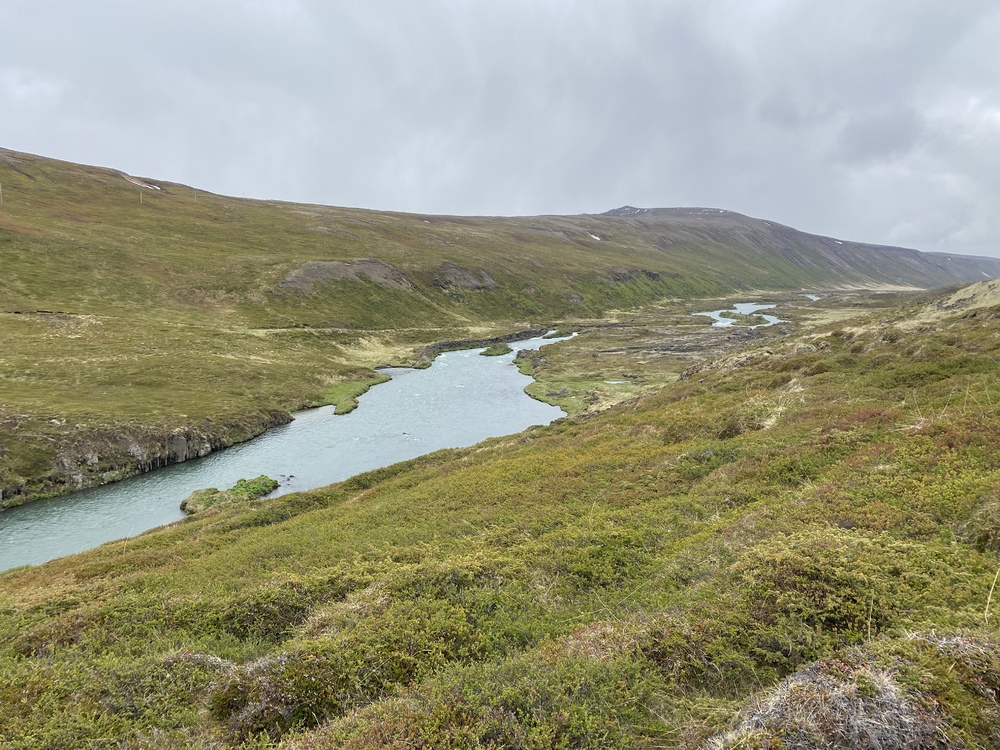
Laugar in Reykjadalur valley is a community which has sprung up around the geothermal activity which is a characteristic of the area. The village is home to the Laugar in Reykjadalur secondary school, besides being the administrative and service centre for Þingeyjarsveit District with, for example a bank, a shop and a restaurant. During the summer months, visitors can find accommodation at the summer hotel and campsite, or with one of the other service providers in the surrounding area. 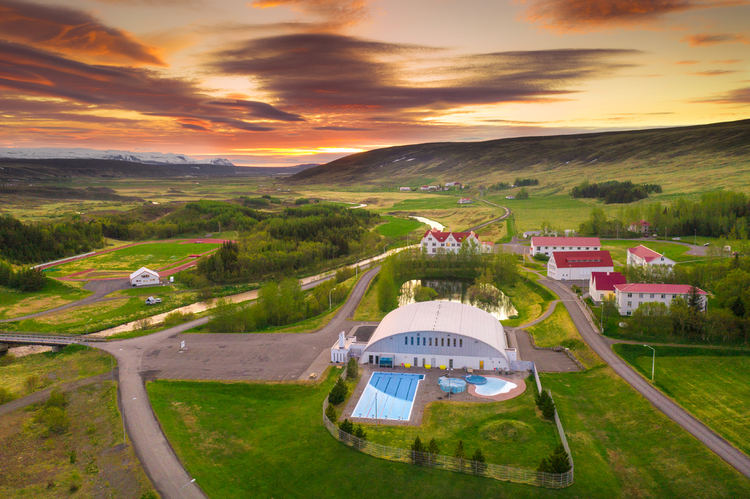
Laugar has an excellent swimming pool surrounded by pristine hillsides, the pool at Laugar is 25 meters long with a temperature around 30°C. There are two spacious hot tubs, one at 40°C and another around 37°C. There is also a kids' wading area and a fitness center. It is a quiet and peaceful area with a beautiful view south the valley. A dip in the pool is the perfect way to start the day like a real icelandair.
Is seeing the Northern Lights on your bucketlist? Then Mývatn is right place to make that happen! Tag #VisitMyvatn
When this „art of nature“ illuminates the sky with spectacular displays of green, purple, pink, even red, our hearts jump with joy over the chance of exploring and experiencing with our customers for 8 months out of the year. Just imagine standing in the cold dark night, not a sound to be heard. The wind barely moving a strand of hair, and the sky is flaring with colors of green and purple.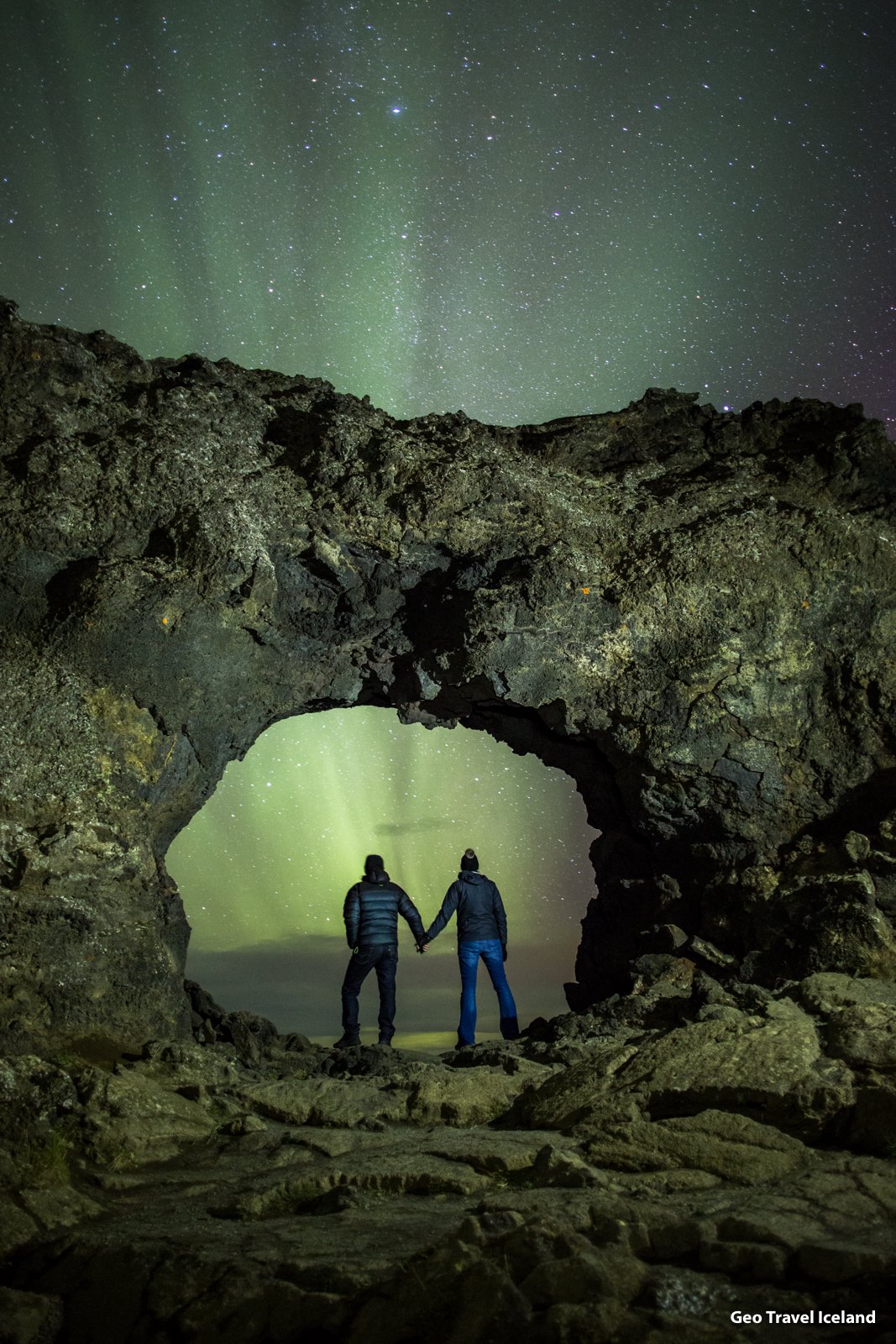
The first question we get when we meet our fellow spectators is ‘What are the Northern Lights and what causes them?’ and our first response is normally:
“The Northern Lights are actually the result of collisions between gaseous particles in the Earth’s atmosphere with charged particles released from the sun’s atmosphere. Variations in colour are due to the type of gas particles that are colliding.” (Aurora Center)
But the best explanation is from Finland where it was believed that the lights were caused by a fox who ran so quickly that his tail caused sparks to fly into the night sky creating the Northern Lights. Indeed, the Finnish word for the Northern Lights “revontulet” translates literally as “fire fox”. Not necessarily correct, but a good story, and you should never ruin a good story with the truth…
Why go to Iceland to see the Northern Lights?
If you really want a great chance of seeing the Northern Lights, come to Iceland. There are several reasons for that. First of all there are several tours, holiday packages and short breaks available that focus on hunting the Northern Lights. Iceland also has the infrastructure to welcome you wholeheartedly. Secondly, Iceland is perfectly located. We are middle of the zone that offers the best changes to see the Northern lights, between 65° and 72° Latitude North. Finally we have the correct weather here, you may not believe it but it is often very favorable towards Northern Lights spotting, but more on that later.
The Northern Lights are a natural phenomenon beyond our control.
To witness the Northern Lights you will need four things to be in order. You need to be relatively close to the North Pole, you will need a dark night and you will need relatively clear skies, clouds don’t necessarily mean no sightings. Finally you will need some sort of solar activity and solar winds, but as we said before the Lights are caused by a collision of particles from the sun with gaseous particles from the earth. But the fact is however that the Northern Lights are unpredictable. We’ve had clear nights following a very active solar phase but seen absolutely nothing and then sometimes following very low solar activity the sky has turned green.
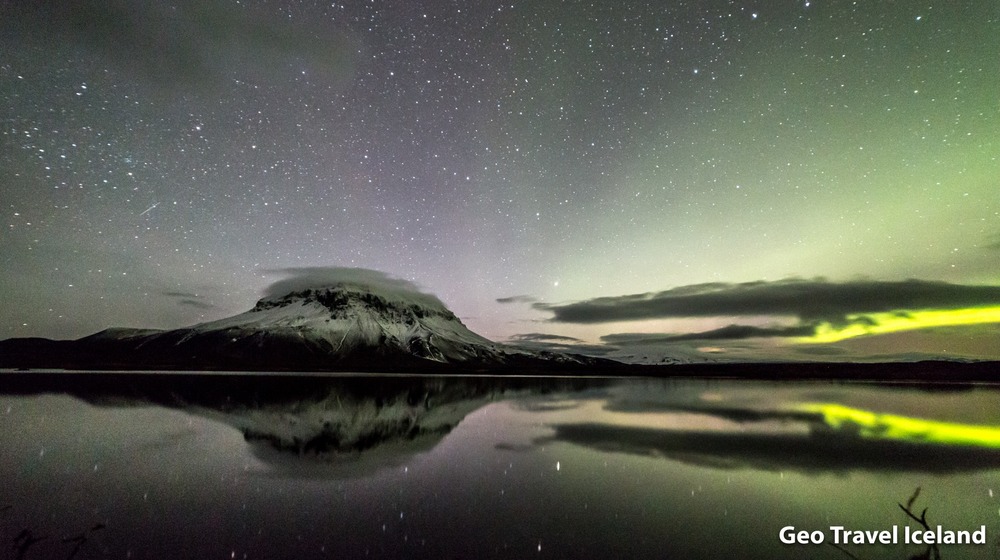
How do I make sure I will see the Northern Lights?
There is no worldly guarantee that you will see the northern lights on your trip to Iceland, for they are beyond human control. But we can plan a holiday were the chances are very good, up to 90-95% chance if you stay for 5 nights. If you spend one night in Iceland and expect to see the lights we would call you an optimist, but the chances increase with every night spend here. And don’t wait until the last night of your Iceland visit to go out on the hunt, try the first night, and then try again if nothing is happening, or if you want to see them again. We also recommend to everyone to plan their Northern Lights holiday not just for the Northern lights, but also go for a destination that has more to offer. This means that when on your holiday you should look at the Northern Lights as a perfect and desirable bonus to a great trip to where ever you go.
Reykjavík City or North Iceland?
You should always try for the Northern Lights in Reykjavík. All international flights arrive in Reykjavík and visitors of Iceland almost always need to stay 1 or 2 nights in the capital. And as we said before, when on the hunt for Northern Lights, start straight away to not miss the ever evasive Northern Lights. The chances of spotting the Northern Lights are slightly better in North Iceland for several reasons. The area is receives less precipitation then other in Iceland and has less cloud coverage on average. The area is also less populated and has larger inhabitated areas and less light pollution from towns and villages. Sel Hotel by Lake Mývatn, a popular destination in our tours, conducted a research of visibility and found that the likelihood of spotting the Northern Lights went from 41% for one night in the area to 71% for three nights. The situation is similar in Akureyri and Eyjafjörður Fjord area. If you are staying in Reykjavik and have no luck spotting the Northern Lights, you have the option of visiting North Iceland for a day or two, it could be worth the while.
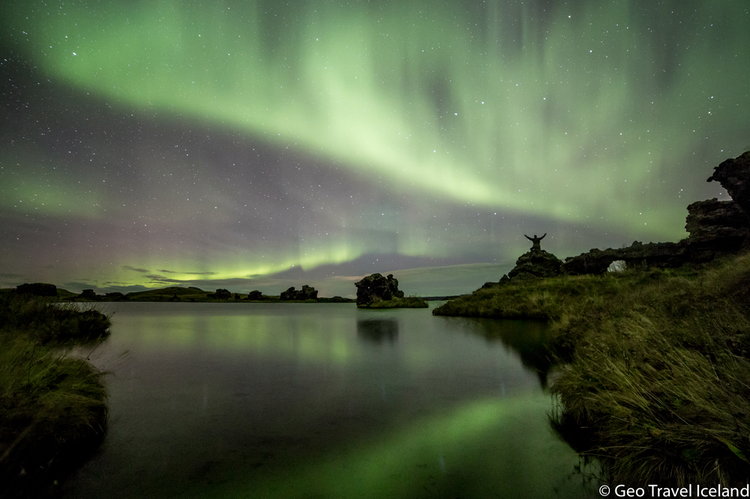
Happy spotting from Team Saga Travel
Visit Mývatn
Your Guide to Mývatn
660 Mývatn
Iceland
info@visitmyvatn.is